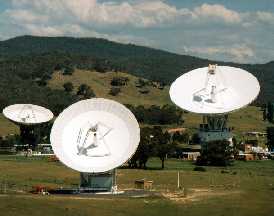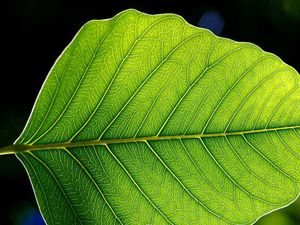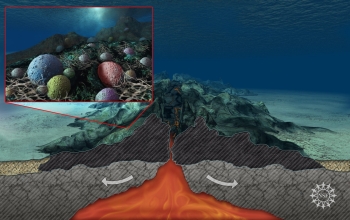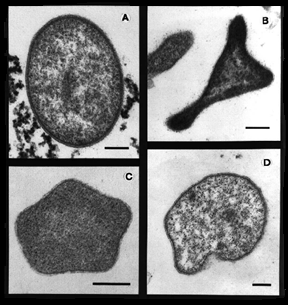These Archaea species live in extreme heat near deep sea vents.
Click on image for full size
Image courtesy of NOAA
Related links:
A Matter of Scale - interactive showing the sizes of things, from very tiny to huge - from NSF
Rock Eating Bacteria Found at the Bottom of the Sea
Archaea
Archaea was originally thought to be just another form of bacteria, but archaea is a much simpler form of life, simpler than a single-celled organism, which nevertheless contains DNA, the gene-code of life. If it weren't found at the bottom of the sea or buried inside of rocks, Archaea might resemble
blue-green algae.
Archaea may be the oldest and oddest form of life. Most live in extreme environments. These are called extremophiles. Other Archaea species are not extremophiles and live in ordinary temperatures and salinities. Some even live in your guts!
Some extremophile species love the heat! They like to live in boiling water, like the geysers of Yellowstone Park, and inside volcanoes. They like the heat so much that it has earned the nickname "thermophile", which means "loving heat", and it would probably freeze to death at ordinary room temperature. Other extremophile Archaea love to live in very salty, called hypersaline, environments. They are able to survive in these extreme places where other organisms cannot. These salt-loving Archaea are called halophyles.
For energy, Archaea does not require sunlight as do plants on Earth, neither does it require oxygen as do animals. Archaea absorbs CO2, N2, or H2S for food, chemically transforms them, and gives off methane gas or sulfur as a waste product. An example for one of the relationships is given below. Notice that free oxygen is not involved. This is among secondary pathways for photosynthesis employed by these early bacteria.

Excess sulfur, as produced in this relationship was found in Earth's early atmosphere and ocean.
Planets which contain an environment wherein archaea might survive include Venus, the past environment of Mars, Jupiter, Saturn, and Jupiter's moon Io.
Last modified April 29, 2004 by Lisa Gardiner.
You might also be interested in:

Autotrophs are organisms that produce organic compounds from an inorganic source of carbon (carbon dioxide) given a source of energy. If the source of energy is the reactions of inorganic chemical compounds,
...more
Most forms of life leave evidence behind that they are there. Plants use up carbon dioxide and release oxygen. Some bacteria are known to release nitrogen into the environment. People leave behind smog,
...more
Photosynthesis is the name of the process by which autotrophs (self-feeders) convert water, carbon dioxide, and solar energy into sugars and oxygen. It is a complex chemical process by which plants and
...more
Jupiter's atmospheric environment is one of strong gravity, high pressure, strong winds, from 225 miles per hour to 1000 miles per hour, and cold temperatures of -270 degrees to +32 degrees (freezing temperature).
...more
Saturn's atmospheric environment is one of strong gravity, high pressure, strong winds, from 225 miles per hour to 1000 miles per hour, and cold temperatures of -270 degrees to +80 degrees. With winds
...more
Eubacteria, also know as “true bacteria”, are microscopic organisms that have prokaryotic cells. Because of their prokaryotic cells, they have a rigid cell wall but no mitochondria or other large organelles,
...more
Seafloor bacteria on ocean-bottom rocks are more abundant and diverse than previously thought, appearing to "feed" on the planet's oceanic crust, according to results of a study reported in this week's
...more
















